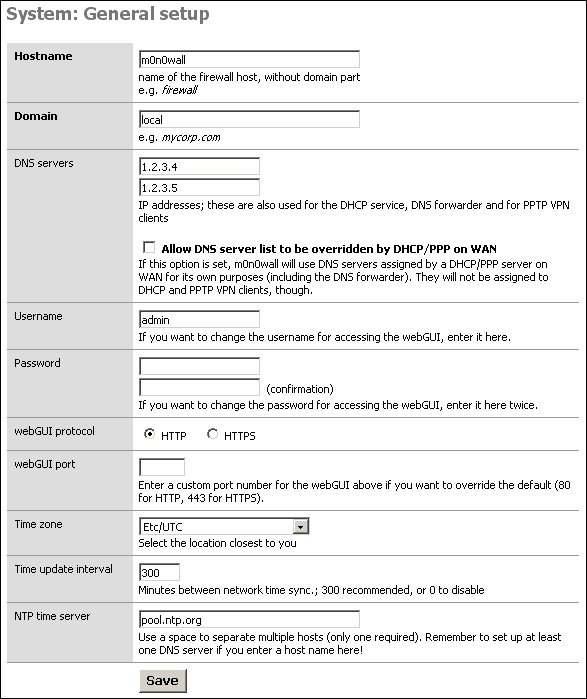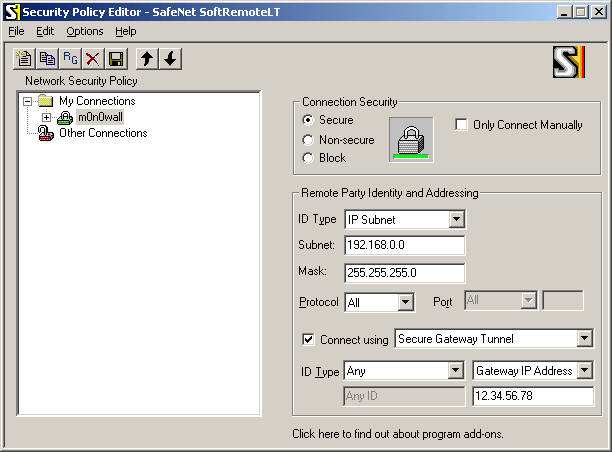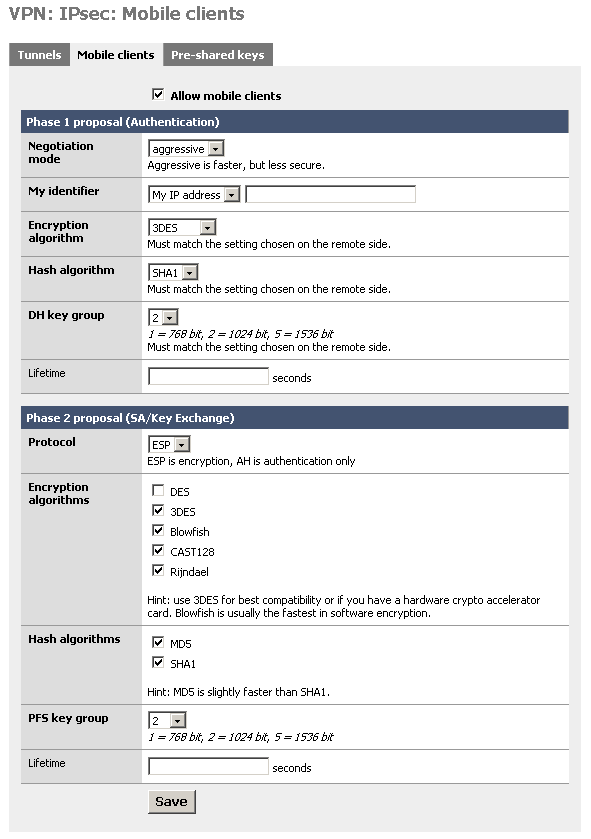
This setting is found under the Advanced tab in the IPsec tunnel.Redistributions must retain the above copyright notice, this This is preset as Add route statically, you want to change this to Add route dynamically. Like in the On if supported and NATed, it will accept any proposal that the client makes. Normally this setting would cause the Security Gateway to propose NAT T regardless if the incoming IKE packet is NATed or not. In this case the client is the initiatior and the Clavister will accept what the client proposes. In this setting the Security Gateway will tell the client that it supports NAT T, but if the Security Gateway had been the initiatior won't propose NAT T to be used if not necesairy.

Perfect forward secrecy, commonly known as PFS, is a term which means that the compromise of an IKE phase 1 key does not cause the compromise of further sessions, because of the re-keying. The shared secret is then used to create the symmetric key for secure transmittal. It does this by first creating a "shared secret", between the two devices. DH group can best be explained as a method for secure exchange of encryption keys. In this scenario, it can be left at the default which is modp group 2 (1024 bit). The difference between "IKE Main mode" and "IKE Aggressive mode" can be summarized into: "Aggressive mode means more data in less packets".ĭH (Diffie-Hellman) group however, is important. It only applies when its configured on the initiator, and the gateway is always the responder in a scenario like this. When configuring the gateway, IKE mode is not important. IPsec-IKE.png (58.14 KiB) Viewed 5925 times IKE (mode) Then, in the Pre-Shared Key drop-down list, select the Pre-Shared Key you created previously in the Pre Shared Key section. Note in the IPsec Lifetime you need a value of at least 2700 seconds to match the IPsec lifetime proposal sent by the Greenbow Client.Īs authentication method, choose Pre-Shared Key.
The greenbow vpn client hack how to#
The IPsec Algorithms, very simplified, a list of algorithms defining how to encrypt the data that is sent through the IPsec tunnel. An IKE SA is basically something that (in the VPN gateway) identifies the IPsec session and associates it with a protocol (ESP or AH), keys and algorithms.įurthermore, authentication method (pre-shared key, two different public key systems or digital signature) and Diffie-Hellman group is negotiated through IKE. IKE (Internet Key Exchange) is used to create IPsec security associations (SAs). That makes it the obvious choice for roaming clients. The Security Gateway will send its reply to the IP address that initiated the IKE/IPsec connection instead of a certain gateway. Note The remote endpoint none is used in roaming client scenarios.

The Remote Endpoint is the address of the machine where all the packets that are originating from the Local network travelling towards Remote net will be sent, in order to be processed by the IPsec engine Here we choose any since we want to be able to connect from all interfaces.īasically, this field is only used when setting up a Lan-to-Lan VPN. This is the local address all remote users will connect to, i.e WAN_ip. That means that virtually all existing IPv4-addresses are allowed to connect. Thus, this field is set to all-nets (0.0.0.0/0). However, in this scenario, clients should be allowed to roam in from everywhere. The Security Gateway looks at this field and compares it to the roaming user's source IP address in order to allow connections only from the configured local net to remote net. Without the proper rules in place under the Rules section, this itself does not mean that the roaming user can connect to the internal network.

However, this is only the first level of access gratification. This is the local network that the roaming users will connect to. Here we choose Tunnel mode since we're using pure IPsec.

IPsec-General.png (51.06 KiB) Viewed 5925 times Encapsulation Mode


 0 kommentar(er)
0 kommentar(er)
